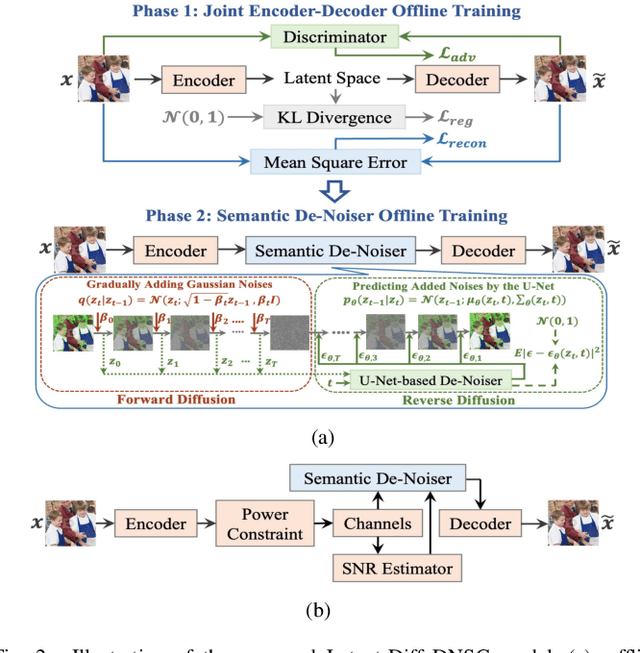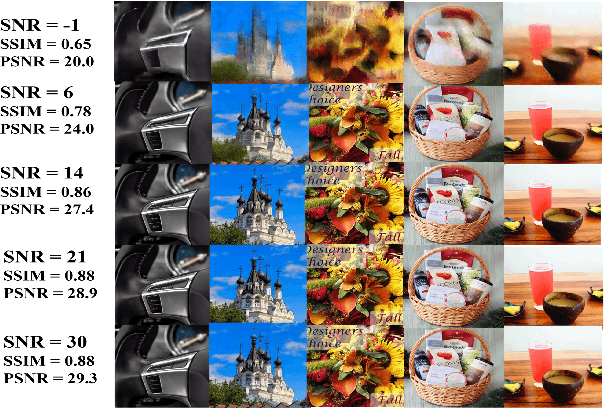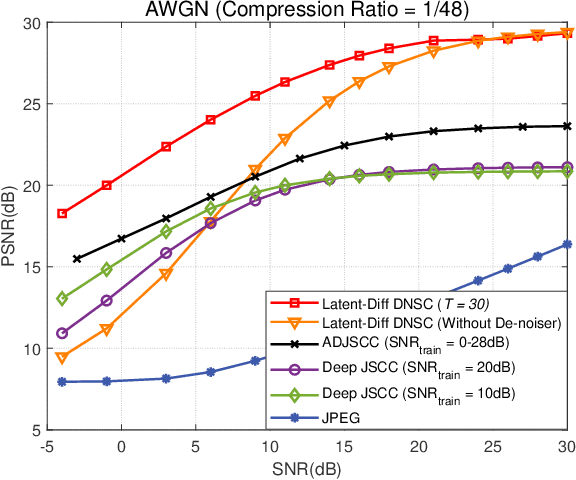Latent Semantic Diffusion-based Channel Adaptive De-Noising SemCom for Future 6G Systems
Paper and Code
Apr 19, 2023



Compared with the current Shannon's Classical Information Theory (CIT) paradigm, semantic communication (SemCom) has recently attracted more attention, since it aims to transmit the meaning of information rather than bit-by-bit transmission, thus enhancing data transmission efficiency and supporting future human-centric, data-, and resource-intensive intelligent services in 6G systems. Nevertheless, channel noises are common and even serious in 6G-empowered scenarios, limiting the communication performance of SemCom, especially when Signal-to-Noise (SNR) levels during training and deployment stages are different, but training multi-networks to cover the scenario with a broad range of SNRs is computationally inefficient. Hence, we develop a novel De-Noising SemCom (DNSC) framework, where the designed de-noiser module can eliminate noise interference from semantic vectors. Upon the designed DNSC architecture, we further combine adversarial learning, variational autoencoder, and diffusion model to propose the Latent Diffusion DNSC (Latent-Diff DNSC) scheme to realize intelligent online de-noising. During the offline training phase, noises are added to latent semantic vectors in a forward Markov diffusion manner and then are eliminated in a reverse diffusion manner through the posterior distribution approximated by the U-shaped Network (U-Net), where the semantic de-noiser is optimized by maximizing evidence lower bound (ELBO). Such design can model real noisy channel environments with various SNRs and enable to adaptively remove noises from noisy semantic vectors during the online transmission phase. The simulations on open-source image datasets demonstrate the superiority of the proposed Latent-Diff DNSC scheme in PSNR and SSIM over different SNRs than the state-of-the-art schemes, including JPEG, Deep JSCC, and ADJSCC.
 Add to Chrome
Add to Chrome Add to Firefox
Add to Firefox Add to Edge
Add to Edge